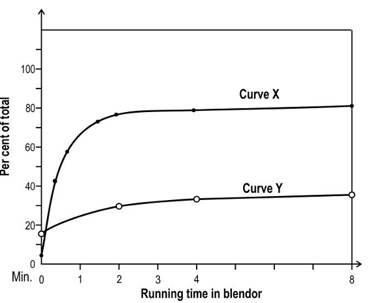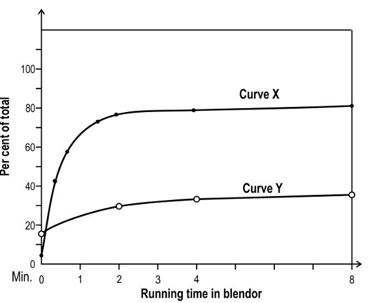The Search for Genetic Material
The Search for Genetic Material: Overview
This topic consists of various concepts like Genetic Material,Hershey and Chase Experiment,Properties of Genetic Material, etc.
Important Questions on The Search for Genetic Material
Negative regulation of protein synthesis is accomplished by
The replication of chromosomes by eukaryotes occurs in a relatively short period of time because
The type of recombination that commonly occurs between a pair of homologous DNA sequences is,
The replication of chromosomes by eukaryotes occurs in a relatively short period of time because
The piece of equipment, that introduces DNA into cells via DNA-coated microprojectiles is known as
The series of experiments done by F. Griffith involved which of the following bacterium:
MacLeod, McCarty and Avery determined that R strain bacteria transforming into S strain bacteria because of:
Experiments of Griffith on mice explained the phenomenon of:
Which of the following organic molecule has a main role to play in the inheritance?
Will a mouse live or die if Nucleic acids isolated from S-strain (heat-killed) along with R-strain (live), incubated with RNase is injected into mice?
Given below are two statements:
Statement I: RNA mutates at a faster rate.
Statement II: Viruses having RNA genome and shorter life span mutate and evolve faster.
In the light of the above statements, choose the correct answer from the options given below:
Unequivocal proof that DNA is the genetic material was first proposed by
Assertion: DNA is transmitted from one generation to the other without any change or alteration.
Reason: DNA is carrier of genetic information.
In Hershey and Chase experiment radioactivity is detected in supernatant when:
Hershey and Chase performed several experiments to find the chemical nature of the genetic material that is present in all organisms. The graph below shows the results of one such experiment. It tracks the amount of 32P and 35S found in the supernatant after the bacterial cell suspension was agitated in a blender. The Y-axis represents the percentage of radioactivity from 32P and 35S each as compared to all radioactivity detected in the supernatant.

What do curves X and Y represent? Give a reason to support your answer.
Hershey and Chase performed several experiments to find the chemical nature of the genetic material that is present in all organisms. The graph below shows the results of one such experiment. It tracks the amount of 32P and 35S found in the supernatant after the bacterial cell suspension was agitated in a blender. The Y-axis represents the percentage of radioactivity from 32P and 35S each as compared to all radioactivity detected in the supernatant.

What did Hershey and Chase want to verify using this experiment?
A series of experiments were conducted by Frederick Griffith in , on transforming principle with :
What is genetic material?
Motivated by the classic experiment of Fredrick Griffith and the work of Avery, MacLeod and McCarty to identify the transforming principle, a scientist redesigned and perfromed the experiment with S-strain and R-strain of Streptococcus pneumonae as summarised in the table below:
| Treatment | Experimental Conditions |
| T1 | S-strain (heat killed) injected into mice |
| T2 | S-strain (heat killed) + R-strain (live) together injected into mice |
| T3 | Nucleic acid isolated from S-strain (heat killed) + R-strain (live) incubated with RNAse and injected into mice |
| T4 | Nucleic acid isolated from S-strain (heat killed) + R-strain (live) incubated with DNAse and injected into mice |
| T5 | S-strain (live) injected into mice |
| T6 | R-strain (live) injected into mice |
From the options given below, identify the outcome of the treatments (T1 to T6) on the viability of the mice.
Choose the correct option for the conclusion of the Hershey-Chase experiment.
